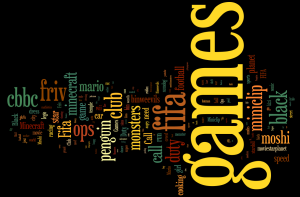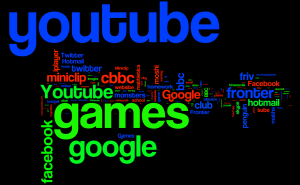Free CPD event in Cambridge during the Easter Hols. The details are here: http://www.raspberrypi.org/archives/6458 and no experience is necessary.
Y5 Maths Conversation on the SMART TAble
Year 1 pupils on the Smart Table- Maths Concepts
Year 1 – Maths skills- basic number functions
- Little focus on process
- More were placing than thinking of places
- Students tended to wait till the train came to them rather than lean across table
- unless task was clearly defined, they would quickly turn to spreading paint
- Class excited, lots wanting to come and see
- Did not listen to or read instructions, so task became lost quickly
- once realized about placing a hot spot, worked well, but slowed speed when it came to matching words to text
Talk through Investigation- Y5 Maths
FREE GCSE Computing Workshop 20/3/14
As part of our development work, we are keen to provide networks and sessions free of charge to support schools in the delivery of the new Computing Curriculum
As you will be aware, we held a Subject Leaders Network last week, where we discussed some elements of GCSE computing and ways of delivering this in the classroom
This focus will continue into our May (8th) and July (TBC) events.
However, we are well aware that for many of you, May will be too late to make changes to your plans for September, so to support you, we are offering a FREE twilight GCSE Computing workshop on 20th March in our Highams Park office from 4pm- 5.30pm
This session (based on feedback from other events) will be for Secondary colleagues ONLY and focus on the delivery of the GCSE practical elements, programming languages and assessment and moderation of coursework.
We hope that by running this event after school, you will be able to attend
If you would like to book a place for yourself and one other person from your team, please email me at christian.smith@strictlyeducation.co.uk
I look forwards to seeing you there
Regards
Christian
Booking now open for Computing and Coding Courses
Booking now open for Computing and Coding Courses
Are you ready for the new Computing Curriculum?
As schools develop and refresh programmes of study to reflect the upcoming statutory Computing Curriculum in September, Strictly Education is able to offer a range of services to help support your school and teachers in embedding and being confident in teaching this brand new area of learning from Foundation Stage to Key Stage 4.
Over the spring and summer term, we will offer a range of training and workshops for teachers and leaders of computing to skill you up and ensure you have the tools and knowledge to deliver the subject.
Developing the Computing Curriculum Consultancy Call for details
We can develop a programme of tailored support for you, to review, refresh and update your existing schemes of work, identify areas of strength across your school as well as needs for training and support.
This consultancy is tailored for your needs and staff and can provide individual support in delivering and assessing this new programme of study from our team of specialist consultants
Alongside our consultancy, we are also offering a wide range of training events over the spring and summer at our training space in Highams Park, E4.
These sessions are offered at a discount for existing customers. Schools wishing to send more than one attendee will also receive additional discounts on the second attendee onwards.
To book on any event, please go to https://www.strictlyeducation.co.uk/eventsys
Switching on Computing Confidence Thursday 20th March
Or
26th May
£149 per person 1 Day
9-5pm
Aim to give understanding for non-specialist teachers about computing and coding in the primary classroom
This session will introduce the new elements of the curriculum, provide practical example of how to teach it, and link to activities and units of work you can deliver back in your classroom
Agenda
• Session1- Coding in Context- looking at the new curriculum and understanding the new objectives
• Session2- Understanding Coding- Using Logo and Roamers to deliver the objectives- creating a simple activity using logo and roamers that delivers the core skills for coding in the primary classroom
• Session3- Making things happen- Using Scratch to create a simple object based programme that can be used to develop skills and understanding and applied in a wide range of creative ways.
• Session4- How we plan and deliver computing and coding, developing simple activities that can deliver the computing curriculum
Switching on Python Programming £249 per person
3 x0.5 days
30th April, 13th May AND 22nd May OR
29th and 30th May
Aim to skill up teachers with the skills necessary to use Python programming as the basis of the Written Programming Language needed to deliver the KS3 and 4 curriculum objectives.
These sessions will focus on developing confidence and skills in using Python, understanding the syntax and structure of the language and how it can be used as part of your teaching and learning
Session 1
• Understanding Python and its place in the national curriculum standards. • Creating a simple input/output programme
• Understanding debugging
• Developing the planning process.
All attendees will create a simple game by the end of this session
Session2
• Developing a more complex game
Strictly Education Can Help with a wide range of CPD and Consultancy to prepare your curriculum and classroom for the new computing standards
Dont Forget
Subject Leaders Network
26th February 2014 12-4pm
Highams Park Offices Free
• Adding subroutines and snippets
• Adding subroutines and snippets
• Developing a Graphical User Interface
Session3
• Developing rules and scoring
• Understanding action and interaction within a game space
• All users during session2 and 3 will create a simple “retro” style game
Switching on Kodo Games Creation- Lab Day 21st May
£199 per person
1 day
The aim of this session will be to introduce teachers to the Kodu environment and develop their games creation skills in a practical “lab” environment that allows them to create and test a game of their own making.
All users will create a simple arcade style game and understand how Kodu can be used to extend learning of coding and programming beyond Logo and Scratch.
Lab Day Programme
• How can Kodu help me deliver my curriculum?
• Introduction to Kodo- controls and tools
• Building a simple worldsacpe
• Interacting with your world- creating characters
• Making your world into a game- adding points, penalties and players • Adding noise- FX and sounds.
• Testing our games
Switching on Scratch- Lab Day 2nd April
OR
9th June
£199 per person 1 day
The aim of this session is to discover the uses of Scratch as a creative tool in the classroom, developing programming as a part of a creative cross curricular project instead of self-contained stand alone units. Attendees will develop their Scratch programming skills and develop a “choose your own adventure” style digital book and understand the ways that Scratch can be adapted to deliver creativity.
Lab Day Programme
• How can Scratch be embedded into the curriculum?
• How can programming support other subjects?
• Developing non-sequential story telling.
• Building a programme using user interactions
• How to test a programme, developing critical thinking and evaluation
Esafety Reports available for download
Esafety Reports available for download
What do 17,000 children in London tell us about online safety?
The London Grid for Learning (LGfL) has published the results of the London eSafety survey. Although undertaken last year, the results of over 17,000 children gave us significant understanding of the ways in which young people use and interact with technology and each other in the online world.
LGfL has published the reports and presentation, Helen Warner from 3BM Education Partners and Christian Smith from Strictly Education – both members of the LGfL eSafety Board, gave at BETT this year.
London Esafety Survey
You may not have noticed but Christian was presenting at BETT on behalf of the London Grid for Learning about the results of the London Esafety Survey
Over 17,000 responses from pupils y3-9 with some interesting and useful data
You can find the full presentation at http://www.lgfl.net/esafety/Pages/E-safety-Survey.aspx
Below are some Wordles of the results of our students favourite sites
ICT/Computing Subject Leaders Network
at
Strictly Education, 500 Larkshall Road, Highams Park, E4 9HH
Michael Gove, Bett 2014
-
12.30pm- Welcomes and updates from schools, including a discussion about the Best Of BETT
-
1.15pm – Safer Internet Day 2014 and the London Esafety Survey results
-
1.45pm- Developing Coding skills using existing and free tools, a practical opportunity to try a range of computing and coding tools for the classroom
-
3.00pm- Code Club
-
3.30pm- Valiant Technology/ Roamer
-
3.55pm AOB and Next meetings
-
4pm Close
This event will be a fully interactive and discussion based event, schools are encouraged to share good practice as well as issues they have faced in any of these areas as well as any other areas they feel that colleagues may find of interest.
You do not need to be an existing Strictly Education Customer to attend this free event
To book a free place on this event, please book via our online booking system at
https://www.strictlyeducation.co.uk/eventsys
or email Christian.Smith@StrictlyEducation.co.uk


